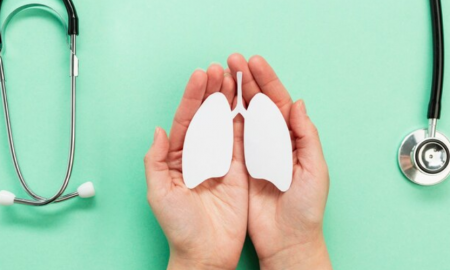
Are High Deductible Insurance Plans as Ideal as They Appear to Be?

High deductible insurance plans have been a hot topic for years, especially as healthcare costs continue to rise. For many Americans, this time of year (October 2024) means it is time to reassess their health insurance options during the annual open enrollment period for 2025. But is sticking with your high deductible insurance plan the right move?
High deductible health plans (HDHPs) come with lower monthly premiums but higher upfront costs. According to the IRS guidelines for 2025, if you are on an individual plan, your deductible must be at least $1,650. For families, that minimum jumps to $3,300.
Thus, these deductibles represent the amount you will need to pay out-of-pocket for medical expenses before your insurance kicks in.
Why Are High Deductible Insurance Plans So Popular?
At first glance, the lower monthly premium of a high deductible insurance plan can seem attractive. Who doesn’t want to save a little extra on their monthly bills? In a year where inflation continues to pressure household budgets, cutting costs on insurance premiums may seem like a no-brainer.

Cotton Bro / Pexels / Generally speaking, HDHPs are particularly appealing if you are generally healthy and don’t expect to need frequent medical care. After all, why pay for coverage you don’t use?
So, if you are a high earner, this might work in your favor. You can funnel the money saved on premiums into a Health Savings Account (HSA), which offers tax advantages. HSAs allow you to save money pre-tax, grow it tax-free, and spend it tax-free on qualified medical expenses.
However, the math is not that simple. While saving on monthly premiums sounds good, the risk lies in the deductible. You must be prepared to pay a substantial amount out of pocket before your insurance even starts to chip in. For individuals, that means shelling out at least $1,650, and for families, it could be over $3,300.
Thus, if you Are not expecting big medical expenses, this plan could save you money. But if things go south, it could drain your bank account faster than you think.
What Is the Risk That Comes With High Deductible Health Plans in 2025?
Recent years have seen rising deductibles across all plan types. But high deductible insurance plans take the cake. Compared to an HMO or PPO plan, where the family deductible averages around $3,000, HDHPs are pushing nearly $5,000. Ouch.

Shvets / Pexels / Having a high deductible insurance plan means a simple medical emergency can leave you with thousands of dollars in bills. This risk is especially concerning if you are dealing with chronic conditions or unexpected illnesses that require multiple doctor visits or treatments.
Similarly, you also have to consider out-of-pocket maximums, which cap how much you pay in a given year. While this may provide some relief, these caps have been steadily increasing as well. For many families, facing a $10,000 to $15,000 out-of-pocket max can feel like an overwhelming financial burden. If you have kids, unexpected injuries, or recurring health issues, this kind of plan might put you in a precarious position.
High Earners vs. Low Earners: Who Should Stick With HDHPs?
High deductible insurance plans make the most sense for high-income earners who have the financial flexibility to handle large medical bills. If you can afford to max out your HSA and build a safety net for potential medical costs, HDHPs might work well for you. The tax benefits and lower monthly premiums will help you save in the long run.
But what about low or moderate earners? For those who don’t have the cushion to absorb unexpected expenses, an HDHP might do more harm than good. Even a single medical emergency could set you back thousands of dollars, potentially leading to debt.
More in Health Insurance
-
`
Can Baking Soda Clean Your Lungs?
Years of inhaling cigarette smoke, pollution, and other toxins can leave you longing for a way to cleanse your lungs. The...
June 27, 2024 -
`
How to Build Muscle Mass After 60? 5 Proven Strategies
Curious about how to build muscle mass after 60? You are not alone. And the good news is that it is...
June 20, 2024 -
`
Prediabetic Foods That Can Lower Your Blood Sugar in 2024
Prediabetes is a health condition characterized by blood sugar levels that are higher than normal but not high enough to be...
June 13, 2024 -
`
Kelly Clarkson’s Weight Loss Journey | Here Are the Details
Kelly Clarkson’s weight loss has been a hot topic among fans and media alike. The iconic American singer and host of...
June 3, 2024 -
`
Essential Vitamins for Gut Health – A Comprehensive Guide
Our gut does more than just digest food – it plays a vital role in immunity, mood, and overall health. But...
May 30, 2024 -
`
Looking to Build A Stronger Sculpted Back? Try Cable Back Workouts
Back workouts using cables, or cable back workouts as they are commonly known, have become the gold standard for anyone aiming...
May 22, 2024 -
`
How Much Water Should I Drink on Creatine? Hydration Tips
Creatine, a popular supplement among athletes and fitness enthusiasts, has gained widespread recognition for its ability to enhance muscle strength, power,...
May 17, 2024 -
`
What Is Bruce Willis’s Net Worth? Get the Inside Scoop Here!
Bruce Willis, the action hero who has saved the day countless times on screen, has built a legendary career. But how...
May 11, 2024 -
`
How to Sleep with Fluid in Lungs – Expert Tips
Living with fluid in your lungs can turn nighttime into a challenging experience, but with the right strategies, you can reclaim...
April 30, 2024















You must be logged in to post a comment Login